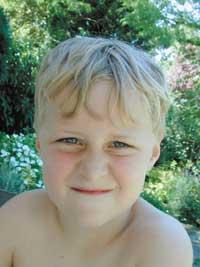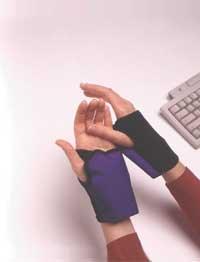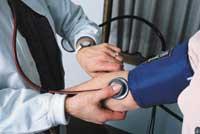Pain: symptom and evil

Thanks to its ability to feel pain, the man can know and respond to external aggressions, for example, when touching something very hot with the hand, the pain pushes to remove the hand before burning it. On the other hand, it warns that something does not work well in the body, so if you do not feel pain, survival would be reduced.
Sometimes, the pain no longer makes sense, for example, when the injury has been completed long ago or when the aggression has become a constant does not provide new information. Then the problem is the pain itself. Precisely, according to the World Health Organization (WHO), the main reason for going to the doctor and missing work is usually pain. In addition, it considers persistent pain as a serious health problem and its direct relationship with individual well-being.
What is pain?
Despite being a universal phenomenon, pain has many aspects. Therefore, it is difficult to determine what pain is. According to the definition of the International Association for Pain Research (IASP), pain is an unpleasant emotional and sensory experience, related to the actual or potential damage of tissues, or described as damage. That is, it takes into account that in the experience of pain there is more than one aspect and, at the same time, it is recognized that it is not necessary to have damage in the tissues to feel the pain.

Most systems and organs of the body have sensory receptors called noceptors. Noceptors, when receiving stimuli, separate their nature and strength and transmit information to the central nervous system. However, not all painful sensations have to be a consequence of the activation of the noizeptors and, on the other hand, the excitation of the noizeptors does not necessarily produce pain.
Pain that feels activated in the skin, muscles, ligaments, joints, or bones usually appears in a particular place and is limited to the affected area. The determination of visceral pain is not usually so simple, since it extends beyond the affected organ. In fact, often the painful sensation is placed in a place away from this organ; for example, the infarction feels pain in the left arm. In the pain of the viscera it is frequent that vegetative reactions such as nausea, dizziness or discomfort appear. On the other hand, not all the viscera has noceptors, so, despite the injury, the patient is not aware of the damage.
Another aspect is the pain caused by lesions or diseases of the nervous system. In these cases, there is no relationship between pain and tissue damage. For example, stimuli that normally do not produce pain can be painful. This is called alodinia and then just touch it with a sheet to feel pain. In others, as in the most serious neuropathies of the bodily extremities produced by diabetes, the opposite occurs: despite tissue damage, there is no pain. This, of course, can cause problems later.

Under normal conditions, the damage information is transferred to the spinal cord through the neurons of the noceptors. Here the first processing occurs and, on occasions, there is a reflected response without intervention of the conscience to painful stimuli. Then, the information is transmitted to the upper parts of the nervous system, so that the awareness of the pain is translated into vegetative, motor and emotional responses. On this path, by passing through several “stations” related to certain areas of the central nervous system, information is modulated. In fact, the transmission involves numerous inhibiting and exciting mechanisms whose influence can be seen both in the central and peripheral nervous system. The interaction of all these mediators conditions the feeling of pain.
Emotional aspect of pain

When they began to investigate pain, the researchers focused more on the sensory aspect. But today too much importance is given to the emotional. It is clear that memory, affectivity, and knowledge influence the feeling and response of pain. In fact, it has been shown that through the nervous system zones related to these functions various neurochemical processes are launched.
In the definition of IASP itself it is recognized that pain is an unpleasant sensation, and this adjective encompasses a set of feelings that can be different from one person to another, among which it is very common that the one who is sore mentions pain, anguish or disappointment.
The way to express pain (crying, immobility, oral expressions...) is more related to the nature and situation of the individual than to tissue damage. A very illustrative example is the chorus by sexes that arises from differentiated education: men do not cry.
In addition to education, there are many other agents involved in the feeling and expression of pain. Among other things, the affective situation and the protection of others have a great influence; the lack of friends or parents increases the pain. Anxiety and tiredness also increase pain. On the other hand, it responds according to the experience of the one who suffered the same damage: if in the previous one was completed correctly, it will face greater tenacity and vice versa.
The meaning of pain for the sick (threat, loss, punishment or challenge) and the culture of the environment condition the perception of pain and the attitude of the sufferer. Thus, although pain of the same intensity can occur, the cancer produces a pain greater than the average pain.

Another variable that influences the acceptance and expression of pain is the same. Young children have problems understanding and verbalizing pain. In addition, they behave with suspicion to doctors and nurses, who do not know that the goal of their actions is to cure. At the other end of life it is more difficult to accept pain, as older people associate pain with aging and death, and fear increases pain.
In the diagnosis and treatment of pain, all these variables must be taken into account.
Acute pain vs. chronic pain
The classic classification of pain is based on the evolution of pain, which is what focuses on the application of treatment. It is distinguished, therefore, between ephemeral, acute and chronic pain.

When the stimulation of the noceptors of the skin or other tissues is not persistent and the damage is low, transient pain occurs. Also called physiological pain, it is considered beneficial because it allows differentiating the intensity, duration and nature of the stimulus.
Acute pain, except for specific exceptions, is due to external or pathological aggressions. It is associated with major tissue damage, usually due to traumatisms, surgical interventions or various diseases. By limiting mobility, acute pain prevents increased damage and accelerates the healing process. Therefore, as ephemeral pain, it is essential to live.
The duration of acute pain is conditioned by the time the tissues take to heal. However, in order to establish a deadline, the IASP assigns it a duration of three months. It must be taken into account that acute pain can be the beginning of a chain of mechanisms in the system of the notion, so an early intervention can prevent pain from being chronic.
Chronic pain is manifested, in principle, when the stimulation of the noceptors is persistent; for example, those affected by arthritis suffer for years. However, despite healing tissues it is usually quite common to feel pain, even more in some patients with chronic pain no signs of injury can be found. Thus, although acute pain is considered a symptom of the disease, chronic pain is spontaneous. On the other hand, depending on whether chronic pain is caused by cancer or not, a distinction is made between oncological pain and non-oncological pain.
Sometimes chronic pain is not acute, but as it lasts for months or years, the physiological response disappears and alterations appear in some systems. For example, osteoporosis, fibrosis, and joint stiffness are common in the bone system. Related to the nervous system, depression, confusion, changes in sleep and sexual dysfunctions appear. Stress and malnutrition act on the immune system, increasing the risk of infections. In other cases, heart failure or muscle weakness is felt.

Undoubtedly, chronic pain causes serious physical and psychological damage to the sufferer. But not only to him, but also to those around him and to society in general. Therefore, it is so important to treat pain, when it is possible to remove the cause of pain and when it is not possible to treat it.
Diagnosis of pain
In the diagnosis of pain, physical and psychological aspects are taken into account, as well as the ability to express verbal pain. Thus, on the one hand, we analyze the vital functions, certain parts of the body and the responses of the vegetative nervous system, since the physiological responses are different depending on whether the pain is acute or chronic. During acute pain, as a result of sympathetic stimulation, the body prepares for an emergency in which more oxygen is transported to the cells, blood pressure is raised, the pupils are expanded to improve vision. Chronic pain shows effects of parasympathetic stimulation such as paleness, fatigue, or nausea.

On the other hand, when making the diagnosis, it is essential to listen carefully to what the patient says. Through questions and answers, you can see how much pain affects daily activities. It also explores the pattern of pain, that is, when it appears, how long it lasts and when it increases, so the doctor tries to prevent it.
However, without limited to words, the doctor also analyzes the behavior of the patient, especially when it has difficulty verbally expressing pain. In fact, behaviors that express pain can be revealing in all cases, especially vocalizations, faces and movements. In addition, when they appear staggered, they predict the degree of pain: vocalizations can go from auha to cry and to inspiration; faces, from gestures to the bite of the lips; and movements, from restlessness to total immobility.

There are many other methods to diagnose pain. For example, when there are problems locating pain (either because the pain is very widespread or inaccurate, or because the patient cannot express it verbally), the patient can point it out in a drawing that explains the parts of the body. With children, these methods are used, since they can point out in the drawings what cannot be expressed verbally. For example, to know the intensity of the pain, the facial scales give good results. On these scales appear the faces of children that gradually crumble, from a smiling face of being very well to a weeping face of much pain. Thus, the child himself chooses the face that best explains his situation.
Fight against pain
Since the feeling of pain is individual, treatment should adapt to each patient. In any case, treatment is initiated with the simplest technique and medication possible, and if this is not enough, more effective drugs or higher doses and harder techniques are used progressively to manage the pain. In addition, in all cases, psychotherapy and relaxation methods are of great help to reduce anxiety and address the problem.
The most used drugs are anti-inflammatory analgesics, being one of the most known acetylsalicylic acid. However, when the pain is intense or has become chronic, opiates derived from morphine are used. Along with them it may be necessary to take antidepressants. Anticonvulsants, on the contrary, help in neuralgia and corticosteroids are the most appropriate to reduce inflammation of the organs.

In addition to medications, various techniques are applied, from the lighter to the harshest. Thus, local infiltration of anesthetics and corticosteroids may be sufficient to remove muscle or joint pain. In the most severe pain, a technique similar to epidural anesthesia is used to remove semi-pain, that is, anesthetics penetrate around the spinal cord. To avoid the injection or connection to the serum, a deposit that slowly releases the anesthetic under the skin can be placed.
To eliminate certain pain, the most effective treatments are those derived from nerve stimulation, either by small electrical discharges under the skin, or by acupuncture. On the other hand, physiotherapy is beneficial in many cases and helps to recover daily activity. Includes exercises in swimming pool or gym, massages, ultrasound, magnetotherapy and others.
Finally, when there is no other solution, neurolysis can be used, that is, through the surgical, chemical or radiofrequency pathway, the nerves that transmit pain can be destroyed. This, however, discards the possibility of receiving other sensations.
All attempts to dominate pain are aimed at improving the quality of life of the patient. Together with them, we should not neglect the importance of the environment, since the protection of family members, the closeness of friends or belief can do much for those who suffer from pain.
Pain Therapy Units
The Pain Therapy Units (UAM) are specific rooms for the treatment of patients with chronic pain. There are specialists from different disciplines under the direction of an anesthesiologist: psychologists, neurologists, traumatologists, rheumatologists, surgeons... All of them work coordinated and aim to control their own pain. For this purpose, pharmacological and non-pharmacological treatments are combined.

The anesthesiologist of the San Sebastián Oncology Hospital, Lorenzo Ponz, said that the patients are sunk if, despite having traveled a long way from the specialist to the specialist, they continue with pain. Then it is customary to explain the mechanisms that increase depression and pain. Therefore, when he goes to the MTU and manages to relieve the pain, he breaks the vicious circle, so that the gets on the way of healing.
On the other hand, in their day some doctors rejected the use of opioids for their addiction. Now they know that it is not dangerous while there is pain. This is also controlled in the MTU.
The idea is not new, in fact, the American doctor Bonica worked for the first time in the middle of the last century. But while the effectiveness and need of MTU is not questioned, they have not yet spread enough.





